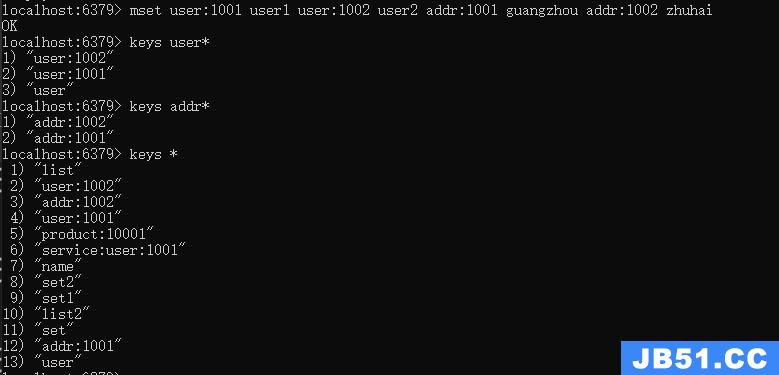redis字符串的定义和实现在Ssd.h和Ssd.c中。
1.定义
typedef char *sds; //本质是字符char的指针
2.字符串的操作
sds sdsnew(const char *init) { size_t initlen = (init == NULL) ? 0 : strlen(init); return sdsnewlen(init,initlen);}
调用sdsnewlen,看一下该函数的实现
sds sdsnewlen(const void *init,size_t initlen) { struct *sh; if (init) { sh = zmalloc(sizeof(struct sdshdr)+initlen+1); } else { sh = zcalloc(sizeof(struct sdshdr)+initlen+1); } if (sh == NULL) return NULL; sh->len = initlen; sh->free = 0; if (initlen && init) memcpy(sh->buf,init,initlen); sh->buf[initlen] = '\0'; return (char*)sh->buf;}
该函数使用redis自定义函数的zmalloc或者zcalloc分配内存(以后章节会专门深入这些函数)。
3.创建字符串使用了另一个结构(红色标注)
struct sdshdr { int len; int free; char buf[];};
从上面的函数可以得出创建字符串时,返回的是一个字符数组的指针。
该结构和字符串的关系如下:
static inline size_t sdslen(const sds s) { struct sdshdr *sh = (void*)(s-(sizeof(struct sdshdr))); return sh->len;}static inline size_t sdsavail(const sds s) { struct sdshdr *sh = (void*)(s-(sizeof(struct sdshdr))); return sh->free;}
4. 操作字符串的方法
sds sdsnewlen(const void *init,size_t initlen); //实际真正创建字符串的函数,使用sdsnew创建字符串时该函数被调用。
sds sdsnew(const char *init); //创建字符串函数
sds sdsempty(void); //创建一个长度为0的空字符串
size_t sdslen(const sds s); //计算字符串的长度
sds sdsdup(const sds s); //复制字符串
void sdsfree(sds s); //从内存中释放字符串,调用zfree方法
size_t sdsavail(const sds s); //计算字符串的可用长度(字符数组中还没有使用的长度)
sds sdsgrowzero(sds s,size_t len); //增加字符串的内存,并使用'\0'填充
sds sdscatlen(sds s,const void *t,size_t len); //字符串拼接常量实现函数,使用sdscat时调用该函数
sds sdscat(sds s,const char *t); //字符串拼接常量函数
sds sdscatsds(sds s,const sds t); //字符串拼接字符串函数
sds sdscpylen(sds s,const char *t,size_t len); //字符串复制的执行函数
sds sdscpy(sds s,const char *t); //将字符串t复制到s中,若s空间不足,使用sdsgrowzero增加空间sds sdscatvprintf(sds s,const char *fmt,va_list ap); //类似sdscatprintf,但参数不是变长的,是固定的#ifdef __GNUC__ //如果是linux平台,使用GNU编译器sds sdscatprintf(sds s,...) __attribute__((format(printf,2,3))); //
#elsesds sdscatprintf(sds s,...); //向参数s添加字符串,实例:s = sdscatprintf(s,"%d+%d = %d",a,b,a+b).#endifsds sdstrim(sds s,const char *cset); //从左边或者后边移除制定的字符串cset,
* Example: * s = sdsnew("AA...AA.a.aa.aHelloWorld :::"); * s = sdstrim(s,"A. :"); * printf("%s\n",s); * Output will be just "Hello World".
sds sdsrange(sds s,int start,int end); //从字符串s中截取制定索引位置的子字符串。
void sdsupdatelen(sds s); //更新字符串的长度。应用实例: 如果没有sdsupdatelen,则结果为2,有则结果为6
* s = sdsnew("foobar"); * s[2] = '\0';
* sdsupdatelen(s); * printf("%d\n",sdslen(s));
void sdsclear(sds s); //将字符串的buf设置为'\0'
int sdscmp(const sds s1,const sds s2); //使用memcpy()比较两个字符串,如果s1>s2则结果为1,s1=s2则结果为0,s1 sds *sdssplitlen(const char *s,int len,const char *sep,int seplen,int *count);//使用sep分隔符分割s,返回字符串数组 void sdsfreesplitres(sds *tokens,int count); //tokens为null时不执行任何操作,否则清空sdssplitlen()函数返回的结果。 void sdstolower(sds s); //将字符串的每个字符转换为小写形式 void sdstoupper(sds s); //将字符串的每个字符转换为大写形式 sds sdsfromlonglong(long long value); //当数字太大的时候,直接将数字转化为字符串.sds sdscatrepr(sds s,const char *p,size_t len); //添加引用字符串sds *sdssplitargs(const char *line,int *argc); //反向解析,可以做命令行解析 sds sdsmapchars(sds s,const char *from,const char *to,size_t setlen); /* Modify the string substituting all the occurrences of the set of * characters specified in the 'from' string to the corresponding character in the 'to' array. * For instance: sdsmapchars(mystring,"ho","01",2) * will have the effect of turning the string "hello" into "0ell1". sds sdsMakeRoomFor(sds s,size_t addlen); * Enlarge the free space at the end of the sds string so that the caller
void sdsIncrLen(sds s,int incr); //根据incr来在字符串的尾部增加字符串长度或者减少剩余字符串空间sds sdsRemoveFreeSpace(sds s); //当字符串没有剩余空间时,重新分配字符串。size_t sdsAllocSize(sds s); //

 文章浏览阅读1.3k次。在 Redis 中,键(Keys)是非常重要的概...
文章浏览阅读1.3k次。在 Redis 中,键(Keys)是非常重要的概... 文章浏览阅读3.3k次,点赞44次,收藏88次。本篇是对单节点的...
文章浏览阅读3.3k次,点赞44次,收藏88次。本篇是对单节点的... 文章浏览阅读978次,点赞25次,收藏21次。在Centos上安装Red...
文章浏览阅读978次,点赞25次,收藏21次。在Centos上安装Red... 文章浏览阅读1.2k次,点赞21次,收藏22次。Docker-Compose部...
文章浏览阅读1.2k次,点赞21次,收藏22次。Docker-Compose部... 文章浏览阅读2.2k次,点赞59次,收藏38次。合理的JedisPool资...
文章浏览阅读2.2k次,点赞59次,收藏38次。合理的JedisPool资...